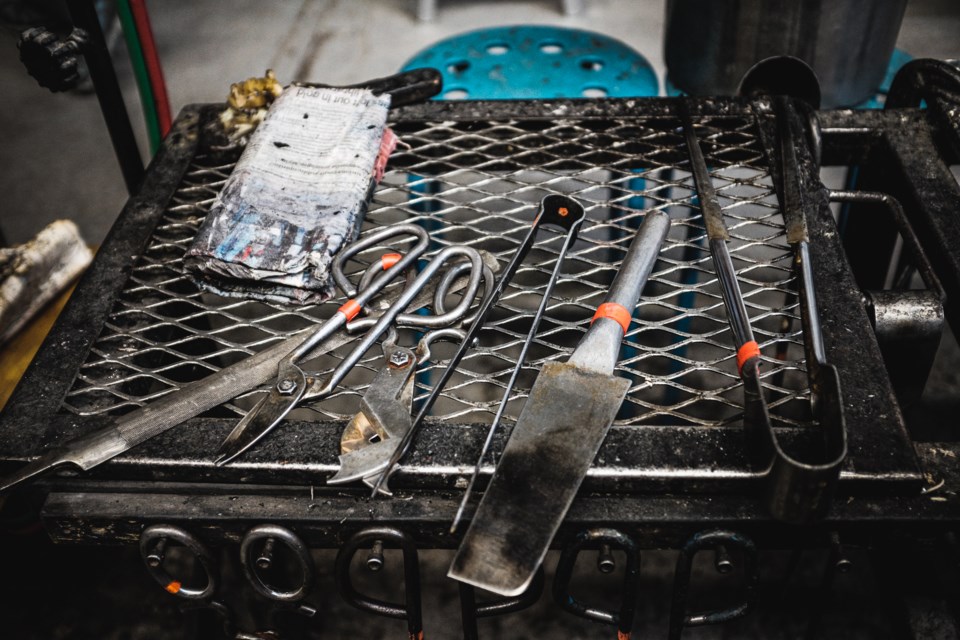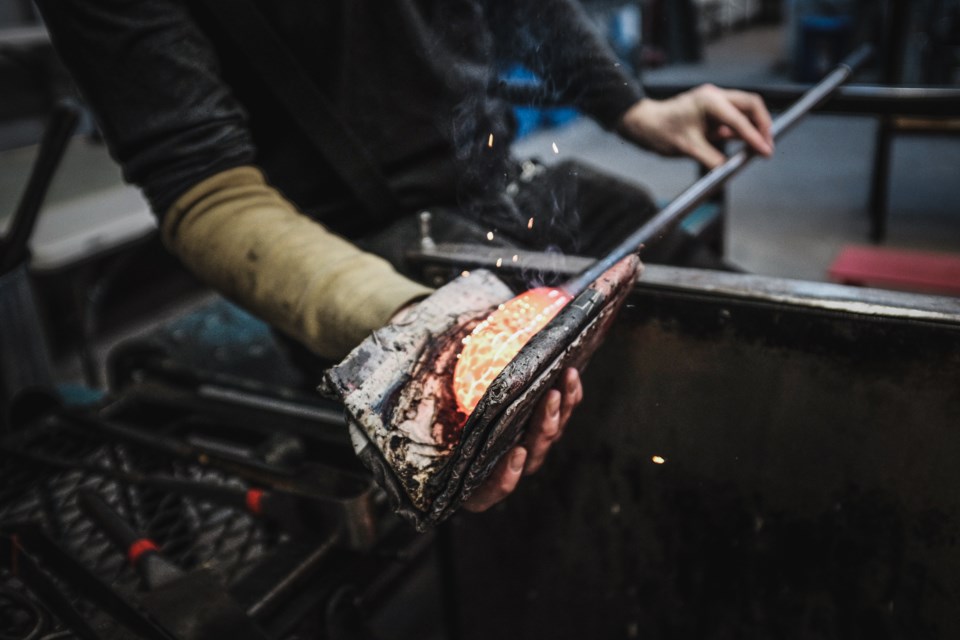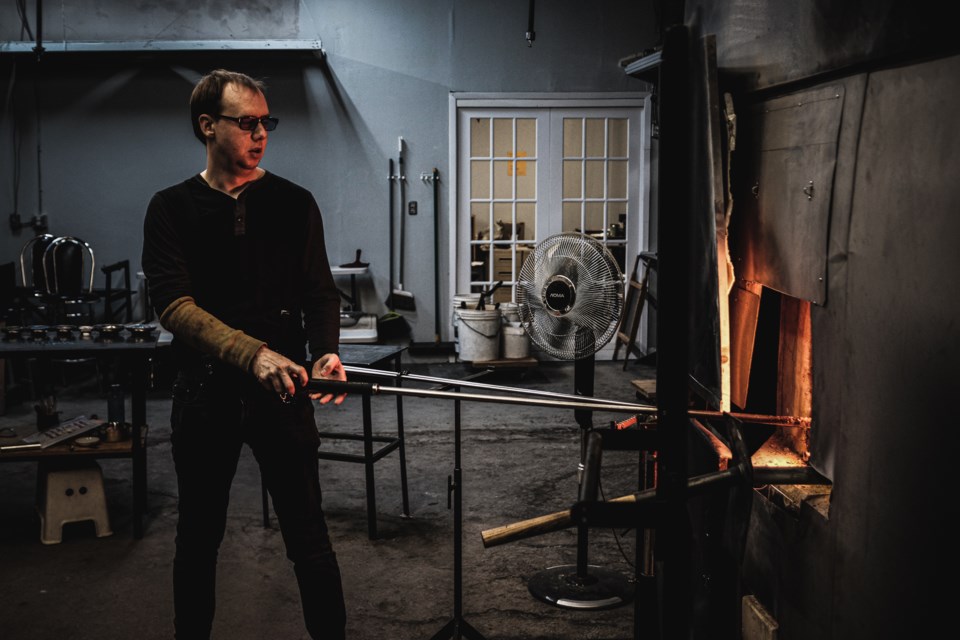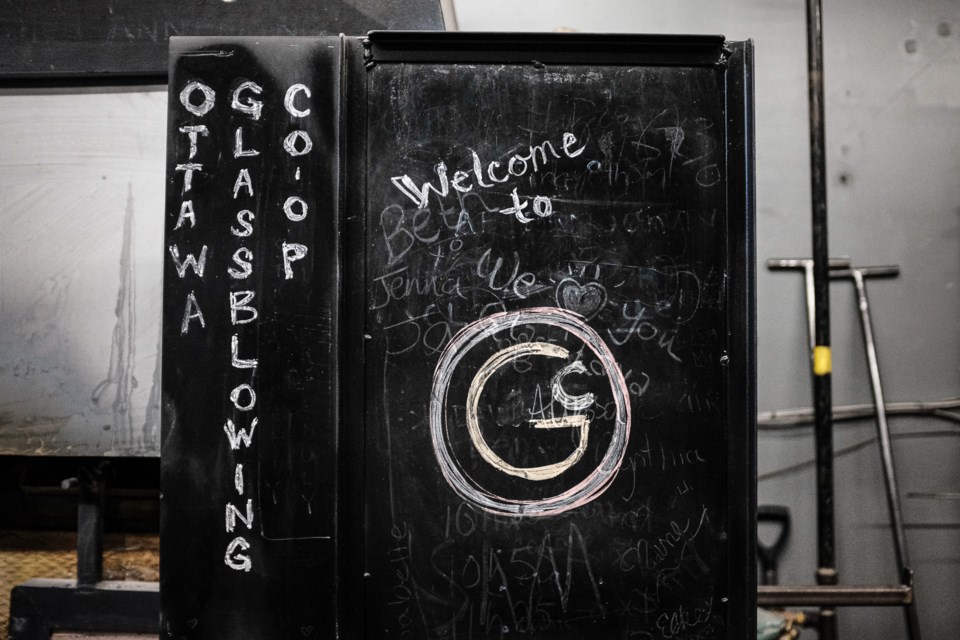Ottawa Glassblowing Cooperative keeping traditional craft alive in capital region
Posted Feb 26, 2020 04:00:00 PM.
Let’s say it’s deep into the Ottawa winter, and while you shiver your way down the frozen canal, you think to yourself: “I could really use a warmer hobby.”
You probably haven’t considered it before, but glass-blowing down at the new Ottawa Glassblowing Cooperative on Gladstone just might check all those boxes for you.
What other hobbies let you toast up your cold hands in front of a thousand-degree furnace full of molten glass, after all?
Around two years ago, the Ottawa glassblowing community was in danger of losing one of its main hubs, when Flo Glassblowing (which occupied the building before the co-op) was about to close down.
“We decided to form a co-op,” says Yvonne Avis, membership engagement officer at the co-op. A group of members incorporated last May, and after some small renovations and updates, they opened their doors this past October.
“There’s pretty much only two co-ops in Canada,” says Lois Fernandez, co-op chair. “Terminal City [in Vancouver] was the first, we’re the second. We had the advantage of their growing pains.”
“We basically just copied them on a lot of things, right down to the minutiae of how you run your online bookings,” says Avis, who is also a co-op member out west. “They worked out the bugs for us.”
The co-op know has about 36 members, who in true collectivist fashion have formed a range of boards to govern the space. Most of the members are hobbyists, says Avis, with about half of the members being renting space on a monthly basis. A few of the member occasionally use the space for small-scale commercial production, and Fernandez says they’d like to look at attracting artist residencies as the co-op continues to grow.

 Left: Yvonne Avis holds pellets of raw glass, that will be melted down in their high-powered furnace before being blown into shape. Right: A selection of glassblowing tools. Kieran Delamont/OttawaMatters.com
Left: Yvonne Avis holds pellets of raw glass, that will be melted down in their high-powered furnace before being blown into shape. Right: A selection of glassblowing tools. Kieran Delamont/OttawaMatters.comSo attracting newcomers, and introducing them to glassblowing, is important for the co-op’s long-term survival. Studio technician Jeff MacIntosh runs a series of classes — easy demonstration classes for complete newcomers, and a six-part intro series for those looking to take the next step.
“It’s a certain type of person that will stick with it in the long-term,” says MacIntosh. “Most people start to understand very quickly the challenge involved, but then are also fascinated by the process, so even though they aren’t the greatest at it off the bat (and no one is), they still are interested in continuing.”

 Left: Studio technician Jeff MacIntosh works what will later become a simple glass, with a pad made entirely of newspaper. Right: MacIntosh standing in front of the co-op furnace, heating his glass. Kieran Delamont/OttawaMatters.com
Left: Studio technician Jeff MacIntosh works what will later become a simple glass, with a pad made entirely of newspaper. Right: MacIntosh standing in front of the co-op furnace, heating his glass. Kieran Delamont/OttawaMatters.comIt’s not hard to see how glassblowing could attach itself to you as a hobby. MacIntosh demonstrates how to make a simple glass, and it’s apparent that the craft is mostly distraction-proof: glass, which gains and loses heat fairly quickly, must be tended to more or less constantly to keep it from cracking apart or becoming misshapen. Its tactile, prehistoric qualities seem to be helpful in resisting the urge to check your Instagram feed. And, of course, it is possible to become quite artistic with your glass.
“Once you become addicted to it, you’re pretty much in there. But it’s limiting, it’s cost-prohibitive, so that’s one of the advantages of being a member, is that the more members we have, the lower we can keep those costs,” says Fernandez.
In the end, though, the magic of the co-op arrangement is the community that forms around, and within it. “We don’t put on classes to make a profit, we do it so that we can keep all the costs down,” says Fernandez.
As they continue through their first year, there’s lots for the co-op to learn, and lots of room for them to grow. “We’d like to get more monthly renters, and I’d love to get a couple of big-name artists up here,” says Avis. But it’s also about giving members a space to create, explore, and improve.
Looking to give it a try? The OGC is planning on holding a demo day in April (details to be announced later), or they offer classes that can be booked online. Whether you’re a complete beginner, or someone looking to find a new home for your own glassblowing hobby, the co-op has a place for you.
“The tools we use haven’t changed,” says Avis. But, “there’s always something to learn. Always something.”
 Kieran Delamont/OttawaMatters.com
Kieran Delamont/OttawaMatters.comKnow a small business who our readers would love to hear about in our Midweek Mugging feature? Contact Kieran Delamont at delamont.kieran@gmail.com.










